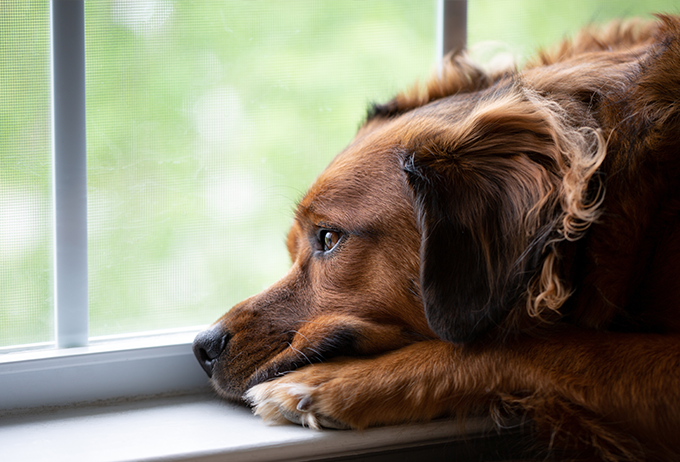Top Tips for reducing your dogs separation anxiety

Reducing separation anxiety in dogs can be a challenging but important task for both the well-being of your furry friend and your peace of mind. In this extended guide, we will delve deeper into each of these tips, providing you with a comprehensive understanding of how to tackle this common issue effectively.
Gradual Departures and Arrivals
Making your departures and arrivals low-key is crucial. This minimizes the emotional highs and lows associated with your comings and goings. When you're about to leave, avoid prolonged goodbyes or excessive cuddling. Similarly, when you return, greet your dog calmly after they've settled down. This approach helps your dog associate your absence with a routine, reducing anxiety.
Practice Short Absences
Start by leaving your dog alone for very short durations, even just a few minutes, and gradually increase the time as they become more comfortable. This gradual approach helps them build confidence and trust that you'll return.
Create a Calm Environment
Providing a designated, comfortable, and safe space for your dog when you're not around is essential. Whether you choose a crate, a specific room, or a cozy bed, ensure that it's a place where they feel secure.
Desensitize Departure Cues
Dogs often become anxious when they recognize departure cues like picking up keys or putting on shoes. You can desensitize them to these cues by performing them without actually leaving. This reduces the significance of these actions and can help lower your dog's anxiety.
Use Positive Reinforcement
Rewarding calm behavior with treats, praise, or toys is a powerful tool in reducing separation anxiety. Gradually extend the time between rewards as your dog learns to remain calm during your absence.
Interactive Toys and Puzzles
Interactive toys and puzzles that dispense treats can keep your dog mentally stimulated when you're not around. They provide a distraction and a source of enjoyment, helping to ease anxiety.
Engage in Exercise
Before leaving, make sure to provide your dog with ample exercise. A tired dog is more likely to relax and nap in your absence. Regular physical activity can also help reduce overall anxiety.
Train for Independence
Teach your dog basic commands like "stay" and "settle." These commands can help your dog learn to be comfortable on their own and provide them with a sense of structure and security.
Scent Comfort
Leaving an item of clothing with your scent on it can provide comfort to your dog. Your scent can help alleviate their anxiety by making them feel closer to you when you're not there physically.
Behavior Modification Training
For more severe cases of separation anxiety, consulting a professional dog trainer or behaviorist is advisable. They can create a customized behavior modification plan tailored to your dog's specific needs.
Counterconditioning
You can associate your departure with positive experiences by giving your dog special treats or engaging in a fun activity just before you leave. This can help change their perception of your departures.
Desensitization
Gradually exposing your dog to your departure routine without actually leaving can help them become accustomed to these actions. This can be particularly helpful if your dog reacts strongly to specific departure cues.
Seek Veterinary Advice
In severe cases of separation anxiety, it's essential to consult a veterinarian. They can rule out any underlying medical conditions and discuss potential medication options to manage your dog's anxiety.
Consult a Professional
Lastly, never hesitate to seek the guidance of a professional dog trainer or animal behaviorist. They can provide expert advice and support throughout the process, increasing the likelihood of success.
In conclusion, addressing separation anxiety in your dog requires a multifaceted approach. Be patient, consistent, and understanding of your dog's needs and emotions. Every dog is unique, so tailor your strategies to suit your furry friend's specific personality and responses. With time, effort, and a comprehensive plan, you can help your dog feel more secure and relaxed when you're not around.
Learn more from our Resource Centre or visit our Blog for more educational information.

